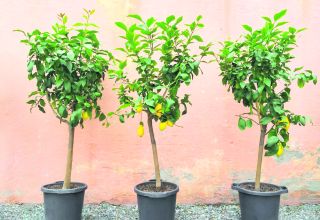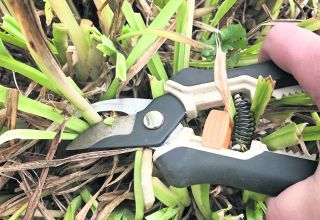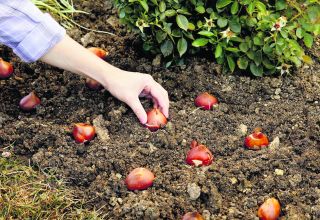It’s now getting a lot colder and there’s less daylight hours. But don’t put your garden to bed for the winter just yet! You can still pot up some colourful winter containers, start planning next year’s garden and of course, don’t forget to feed your garden birds!
There’s still some colour to be found among leaves and berries. Winter-flowering shrubs such as mahonia media hybrids, winter honeysuckle and viburnum bodnantense will bring gorgeous fragrance to the short days.
Try and spend a little time tidying up your borders – you’ll be pleased you did when spring comes round. This is of course a great time of year to plant shrubs.
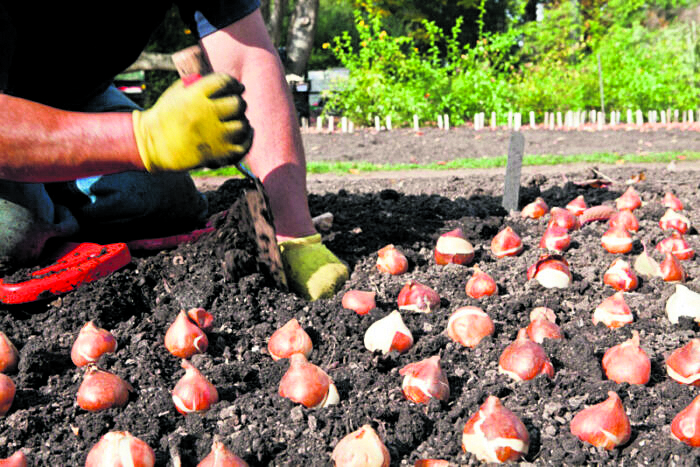
1. There’s still time to plant your spring bulbs
Bulbs should preferably be planted earlier in autumn, but there is still time this November for tulips, daffodils and crocuses. These bulbs can be planted through to the end of the month if the weather is mild before the soil loses the heat from the summer months.
You can always plant bulbs in pots indoors to add some spring colour to your home, just make sure you choose indoor cultivating bubs.
Autumn bedding plants such as pansies, violas and wallflowers can still be planted if you are experiencing mild weather. Make sure you plant winter bedding plants on a sunny day, in rich, moist soil. Adding grit is especially important for soil drainage in case you experience frequent showers this winter.
Traditionally, you should plant tulip bulbs in November. It’s sometimes said that this reduces the chance of tulip fire, but unfortunately it probably won’t have any affect. Tulip fire usually spreads in the spring and overwinters on bulbs left in the soil. The cold weather has no effect on it. If you have tulip fire remove the bulbs and do not plant in that area for several years. New bulbs will not be infected so the real reason gardeners’ plant in autumn is probably because the border still looks good until the first frost, so why wreck it planting bulbs?
Look for bulbs that have intact skins and don’t show signs of mould. Tulips should be planted three times the depth of the bulb.
2. Protect tender plants from frost
Protect tender plants such as phormiums, tree ferns and cordylines in case frost should strike. It may be easiest to move large containers into a sheltered corner and cover them altogether with horticultural fleece rather than covering each plant individually.
3. Check stored crops
The secret to avoiding stored crops, such as onions, rotting before you use them is to empty out the store and check over the veg every couple of weeks. Look the veg over and gently press it to identify any that have started to rot and need to be used soon. Only put firm veg back in the store.
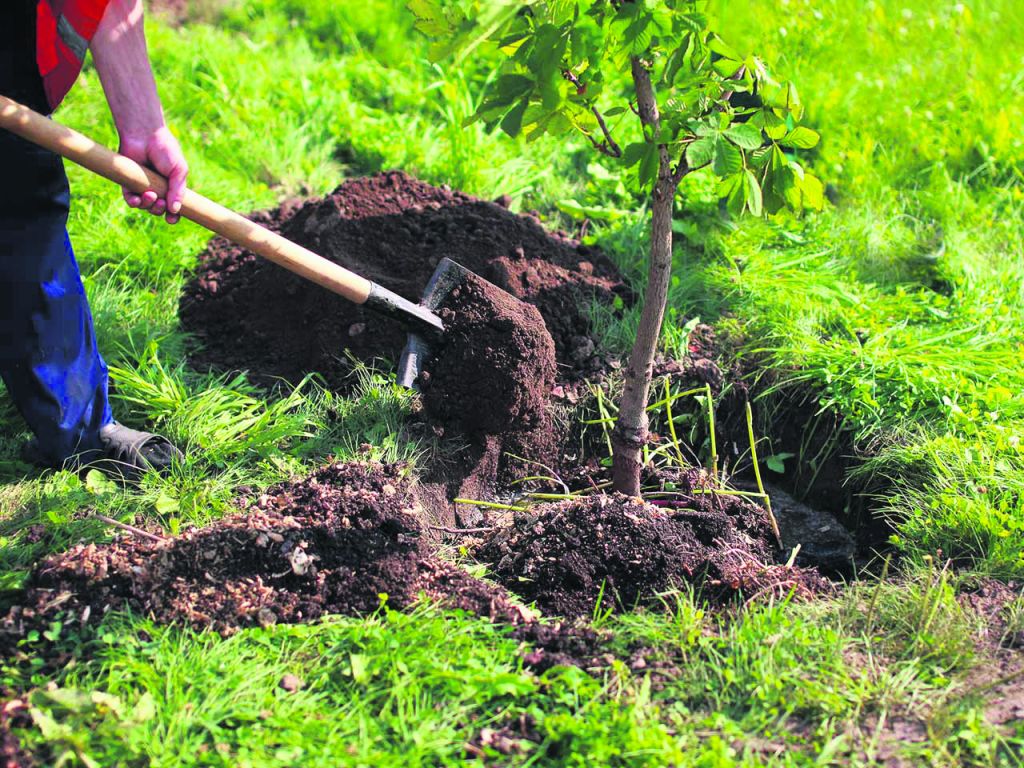
4. Treat yourself – buy and plant a tree
November is the perfect month for treating yourself to a new tree in the garden. There’s something very special about getting a tree in the ground at this time of the year with all the expectation of how it will look and grow ahead of you.
For your chosen tree to develop into a fine specimen, it should be well-branched with one, straight leading shoot and no crossing branches.
Choose a dry, cool day for planting but if the soil’s sticky enough to cling to your boots, it’s too wet for planting. Dig a hole that’s at least twice as wide and also deeper than the roots of your tree and fork over the base and sides to allow roots to spread easily.
To plant, remove the pot and put the tree in the hole next to a stake, which should be on the leeward side to prevent wind rock and movement of the roots. Check the depth – a soil stain on the trunk indicates the ideal depth. Then fill the gaps with soil, which has been enriched with organic matter, pressing it down onto the roots to make sure that it is stable and water in.
Finally, wrap the trunk with a tree guard to prevent rabbits from nibbling the bark.
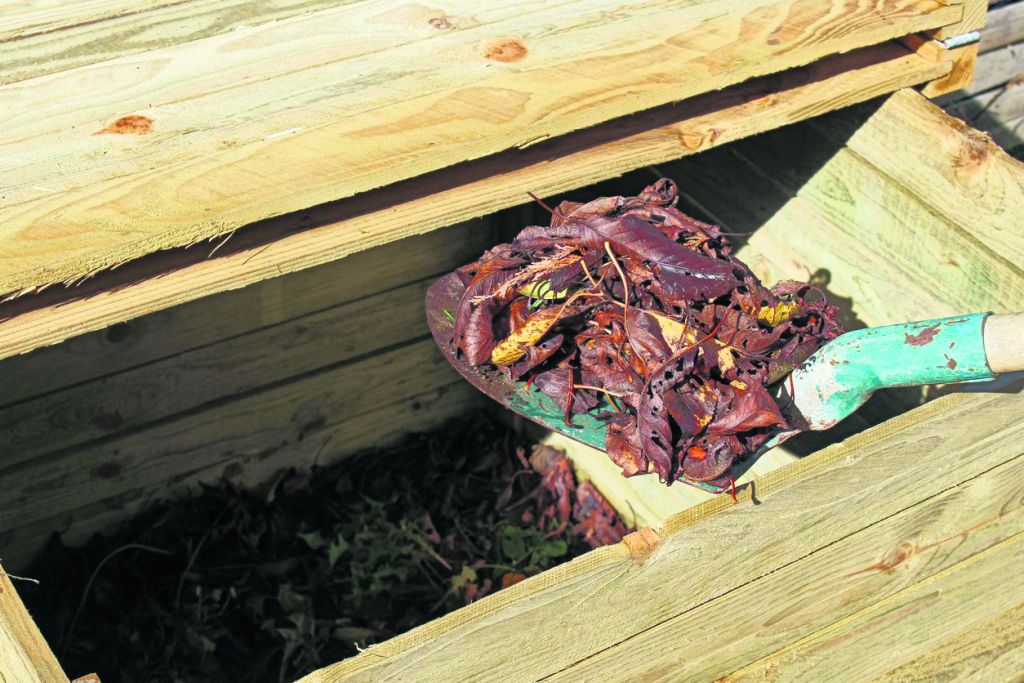
5. Turn compost heaps
Turn heaps of compost made since late summer to speed breakdown and improve quality. It’s hard work but makes a worthwhile difference as it speeds up decomposition. It only needs to be done once and is a way of introducing oxygen to the heap. This feeds the bacteria, which promotes further decomposition. It’s also a good opportunity to break up any lumps you find and mix the ingredients. The easiest way to do it is to dig out the whole heap with a fork and move it into an empty neighbouring bin.
6. Sowing sweet peas outdoors
Sweet peas can be sown outside but they do need some winter protection either under cloches or in a cold greenhouse. November is the perfect time to start sowing sweet peas for next year – be sure they spend the winter under cover.
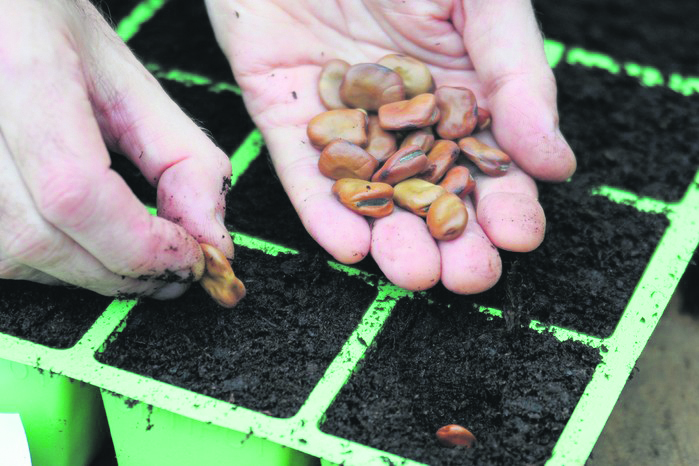
7. Sow broad beans
Sow broad beans in deep module trays, with the aim of seedlings being about 5cm high by the new year. This small size makes them more weather hardy than larger plants. The reason for the deep module tray is that broad beans quickly put out a long root. Sow in a greenhouse until mid-November and then the plants can go out before or even after Christmas. Sowing them in autumn rather than February means you should have an earlier crop. If the winter is very hard and the autumn-sown plants fail, you can always sow more in February. Remember not to sow too many seeds, as broad
beans plants are multi stemmed and give lots of pods.
8. Mulch bare soil
As you clear summer crops on the veg patch, increase the bed’s fertility for veg by mulching with organic matter, such as garden compost or spent mushroom compost. Apply a 5cm-deep layer and leave the worms to drag it into the soil.
9. Plant garlic this month
Garlic likes a period of cold so November is a good time to plant it. Put individual cloves 15cm apart in rows that are 30cm apart. Rust has been a problem in recent years so plant in a cold greenhouse or under a cloche to help avoid it.
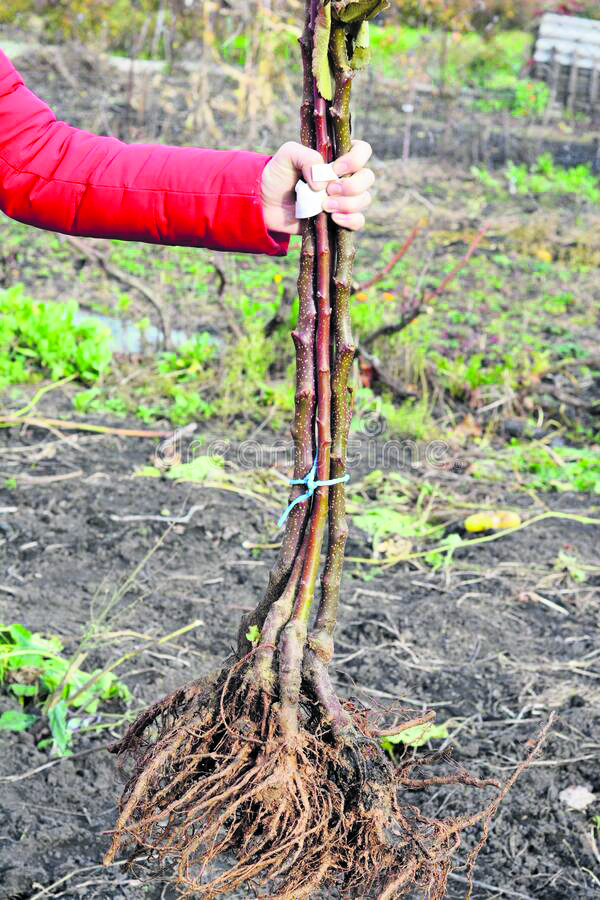
10. Order bare-root plants
As long as the soil isn’t frozen or waterlogged, this is the time of year for planting bare root trees. These types of plants are one or two-year-old ‘whips’ that look like long twigs but will soon grow and become robust, quickly-maturing trees.
They are sold, as their name suggests, with bare roots, ie. not in containers.
It is an economical way of buying stock, especially if you need to purchase in bulk for planting a hedge or orchard, and the varieties on offer are generally wider than buying container plants.
Try to plant them as soon as they arrive. Otherwise, give them a good soak in a bucket of water then roughly plant in a corner of the garden until you’re ready to put them in properly.
11. Prune apple and pear trees
Remove dead or weak growth and any crossing branches. Shorten this year’s growth on main branches by a third, to a bud facing the direction you want it to grow in. Cut back side-shoots to five or six buds.
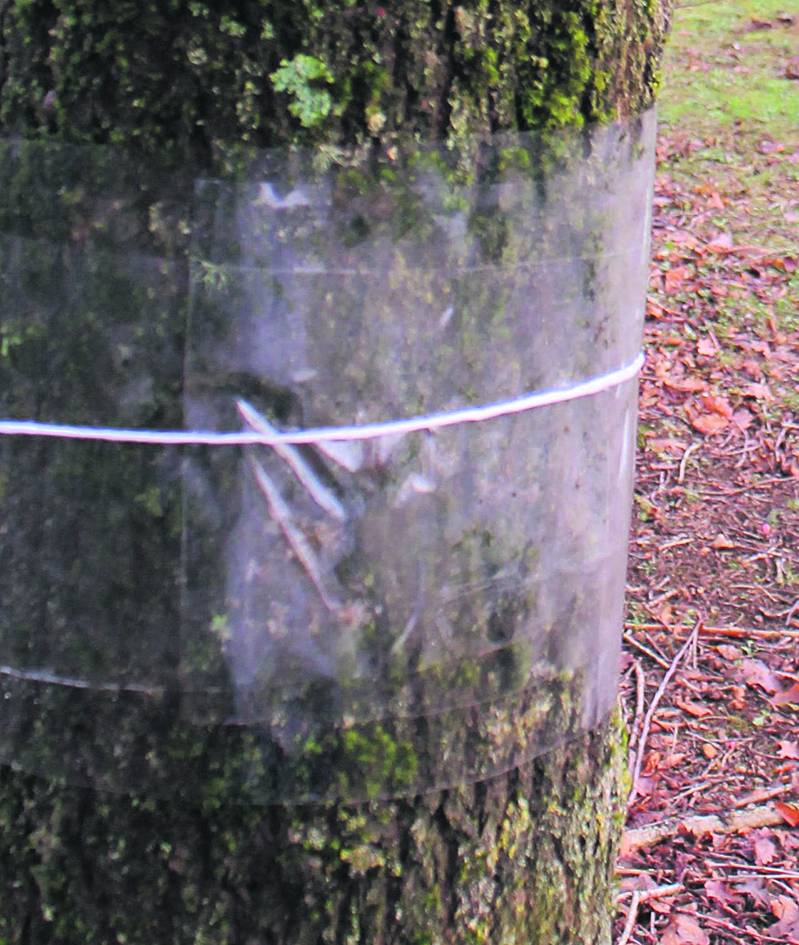
12. Protect your trees from winter moth caterpillars
Grease bands and tree barrier glues (horticultural grease) are a pesticide-free method for reducing the numbers of winter moth caterpillars on fruit trees in the spring. They stop and kill the wingless females from climbing up tree trunks and laying eggs. If a fruit tree has problems with severe defoliation or reduction of fruit crop by winter moth or a related species, this can be minimised in subsequent years using grease bands. Winter moth caterpillars can feed on developing fruit buds of fruit trees such as apple, plum, pear and cherry reducing the amount of fruit produced though where possible we do recommend tolerating their presence. On ornamental trees the damage should be tolerated as it will not affect the long-term health of the plant. The caterpillars are an important part of the biodiversity trees support including as a food source for nesting birds in the spring.
Remember sticky barriers give no protection against codling moth (the cause of maggoty apples), plum moth (the cause of maggoty plums) or other types of caterpillars. Those moths have winged females that are active in midsummer.
Grease bands and tree barrier glues should be placed on trunks and tree stakes about 18 inches above soil level in late October, before the adult moths begin to emerge in November. Moth activity declines after January, but some species with wingless females are active until April.
13. Move citrus trees indoors
These should now be kept indoors or under glass in a light frost free place. It is important to continue feeding and watering as necessary using winter citrus feed, only watering when the soil is dry. How often this is will depend on where the plants are being over wintered. Pick up and dispose of any fallen leaves.
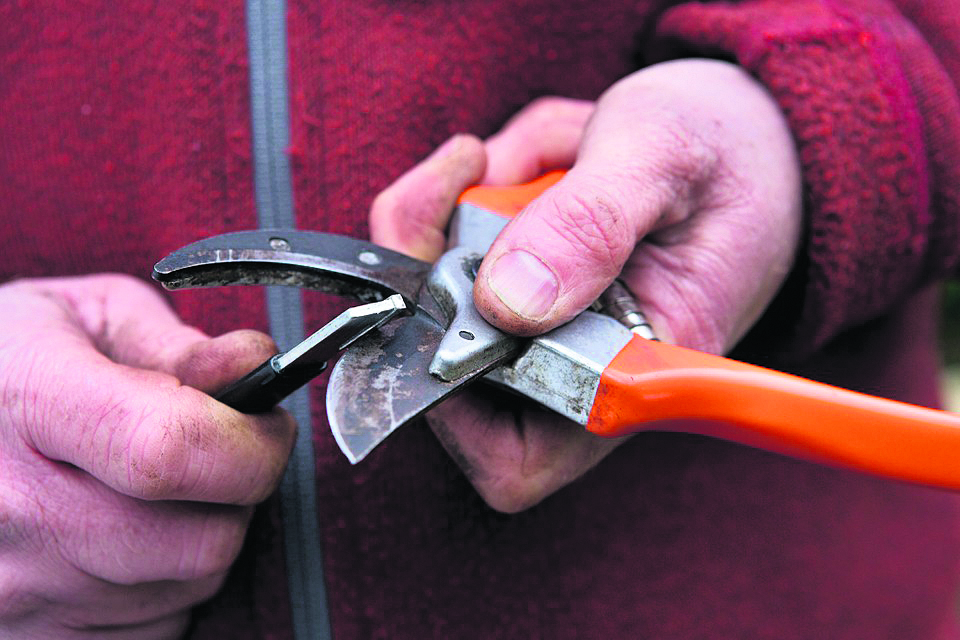
14. Sharpen your secateurs
It’s a busy time of year for tidying up, so make the job easier by sharpening your secateurs. Begin by cleaning off any hardened sap with wire wool.
Then, use a fine-grade sharpening stone (alternatively, use a sharpening device), hold the secateurs firmly in your hand and sharpen both edges of the cutting blade on anvil secateurs, and only the outer edges of the blades on bypass secateurs.
If you don’t fancy doing it yourself or you’re experiencing other problems with the secateurs, check first as some manufacturers offer servicing.
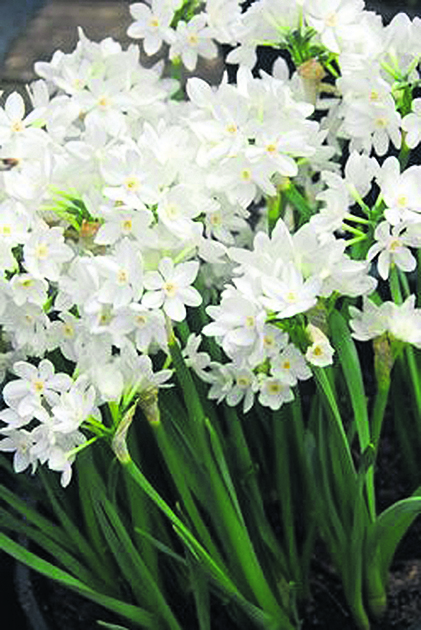
15. IF YOU ONLY DO ONE THING…
Put prepared ‘Paperwhite’ daffodils – which means they’ve been specially treated to flower quickly – in a pot. Keep indoors and they should be flowering for Christmas.



